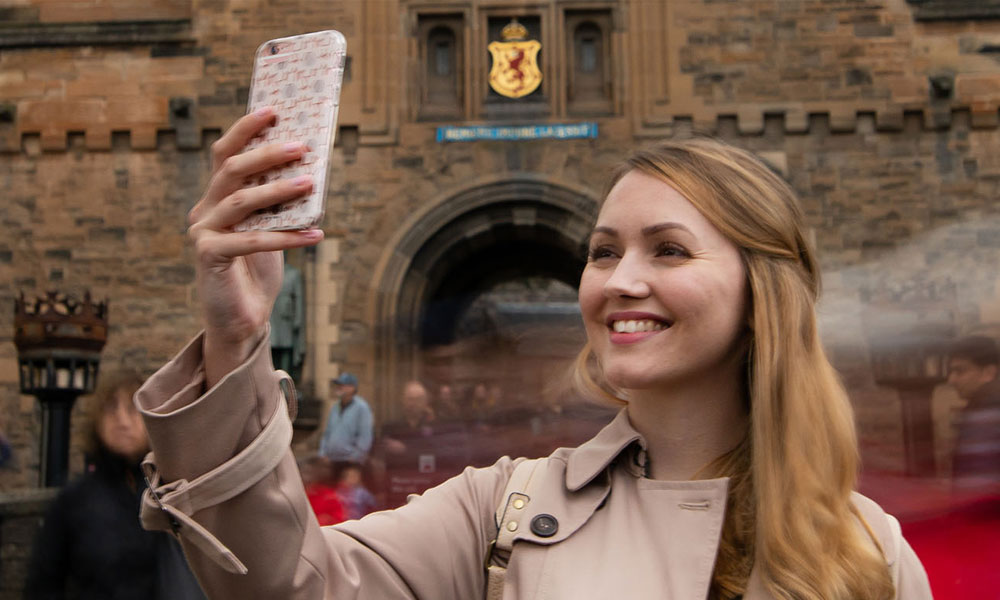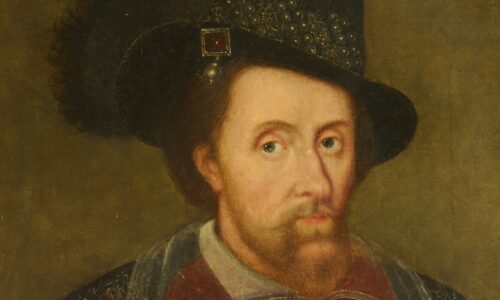
James VI and his Edinburgh Castle legacy
26 March 2025
Find out how James VI made his mark on Edinburgh Castle. Samantha Fullerton from our castle guide team explores the legacy that the complicated king left on our castle.
Obscurity is now the fittest favour
Falsehood can sue for. It well suits perdition.
It’s their best course that so have lost their fame
To put their heads into the bag for shame.”
– The White King, A Game at Chess, 1624
Amidst the rising stench of stale summer sweat and the Thames, excitement filled the Globe Theatre. Londoners pressed in droves to see the new play, A Game at Chess. It was an instant sensation for nine performances but was soon shut down by royal command for its seditious, satirical content.
The play serves as a thinly veiled allegory of religious and political tensions between Jacobean England and Hapsburgian Spain. The actors played chess pieces representing royal and political figures from both courts. James I of England and VI of Scotland is represented as “The White King” who ultimately presides over the events of the play and banishes pieces into obscurity. The play’s conclusion suggests that to be forgotten by history is the worst fate imaginable. But what about the fate “White King’s” counterpart James VI and I himself? Has James fallen into obscurity or is his legacy set in the stones of Edinburgh Castle?
King in waiting
…Likely to prove a goodly Prince…”
– Thomas Randolph, English Ambassador on James 1566
In two separate nations, two separate queens agonised. Elizabeth of England waited with baited breath whilst her cousin Mary Stewart writhed in her childbed in Edinburgh Castle. The fate of their two nations hinged on the successful delivery of a male child.
As fate would have it, on 19 June 1566 Mary delivered a son in the Royal Apartments of Edinburgh Castle. He was christened “Charles James” but styled as James VI after his Scottish forebears. His lineage was impeccable and gave him a solid advantage. He was descended from a long line of Scottish Stewart monarchs. Moreover, through his English grandmother Margaret Tudor, he had a strong claim to the English throne.
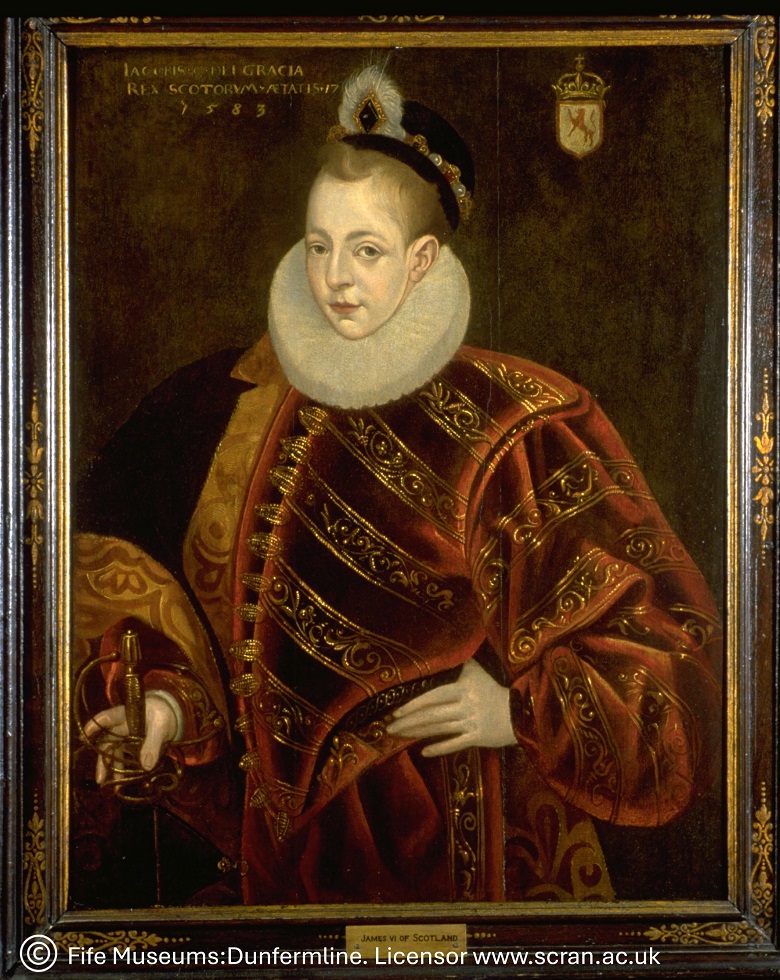
James ascended Scotland’s throne as an infant after his mother’s forced abdication. Without close family, his childhood was dominated by harsh regents, strict schoolmasters, and a flamboyant French favourite. This largely masculine, highly educated and often rough and violent upbringing shaped James into a man of strong contradictions and a remarkable modern monarch.
By 1583, James had come to his maturity. The young king asserted his power by executing the rebellious earl William Ruthven. His Scottish reign would see him fight to establish dominion over the Scottish kirk, to attempt to “civilise” the Highlands and doggedly persecute suspected witches.
Succession
…We princes are set as it were upon stages in the sight and view of the world…”
– Elizabeth I
The dreadful silence had lasted four days. For four days, the sixty-nine-year-old Queen of England, Elizabeth I, lay unable to speak upon the ground where she had collapsed. She had spoken of her mortality, resisted her failing body, and sensed her time was near. Now, her councillors asked the question avoided for forty-five years: Would James of Scotland succeed as king? In response to his name, Elizabeth gestured toward her temple, likely indicating the crown and her desire that it may pass onto James.
Upon Elizabeth’s death in 1603, James succeeded as King James I of England. James saw the unification of the two crowns as “Blessed union” between the two nations. This union became the foundation of Great Britain as we recognise it today.
Whilst James professed an enduring love for the country of his birth and a desire to return to Scotland with regularity, James and his retinue would move his royal court permanently to England. Ever the hedonist, James adored the comparative luxury and majesty of English court. It was a stark contrast to the dour frugality and obstinacy he felt he’d experienced in Scotland. For the remainder of his life, he would return only once to the country of his birth.
The return of the king
The Cheuiott hills doe with my state agree…”
– The Cheviott Hills a patriotic sonnet by James VI, 1590
In 1617, James achieved an important milestone by becoming the longest reigning monarch in Scottish history. This was an achievement, given his struggles with poor health and surviving numerous attempts on his life.
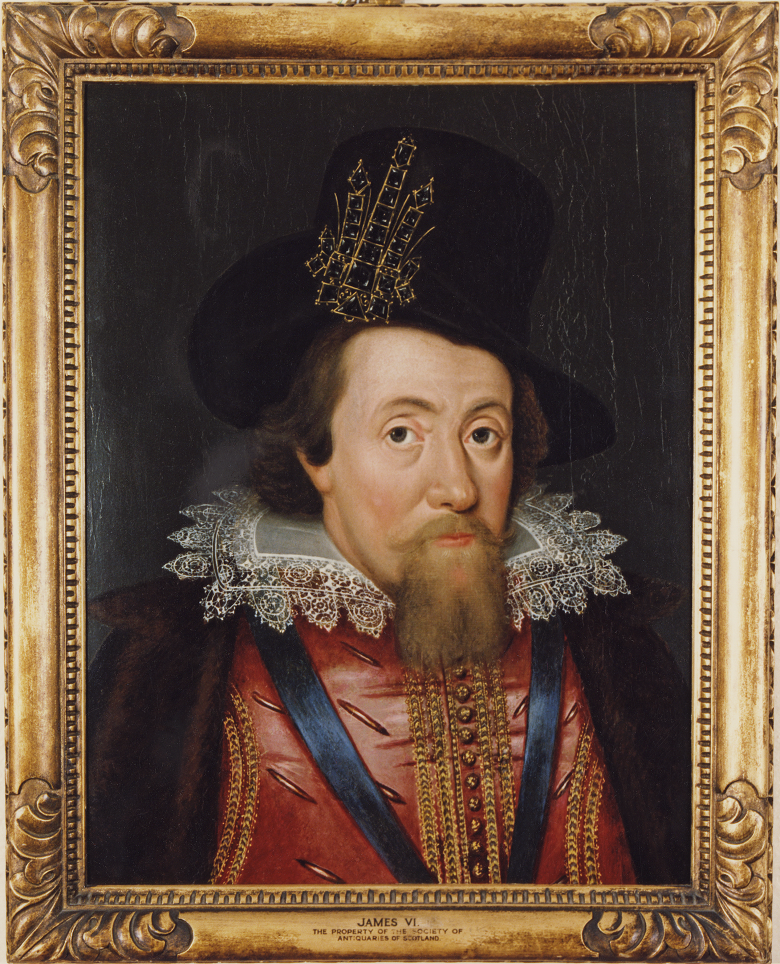
Portrait of James VI of Scotland and I of England. Credit: Crown Copyright HES
To mark the 50th anniversary of his accession, James planned an elaborate northern progress and a triumphal return to the place of his birth, Edinburgh Castle.
The imposing fortress of Edinburgh Castle had not been a favoured residence during James’ kingship. It had been left in a state of decline for decades. Largely antiquated and unfashionable, the castle would have to be lavishly prepared to entertain the returning king.
The renovation of the Royal apartments would demonstrate the current fashions for plasterwork ceilings and wood panelling. A private dining area, referred to as the “Laich hall”, catered to James’s love of informality and intimacy with his close circle and favourites.
The renovation was not not solely devoted to modernity. James also had a desire to commemorate the past. A series of portraits of the previous Kings of Scotland were commissioned for the occasion and a small space was decorated inside the Royal Apartments dedicated to the birth of James.
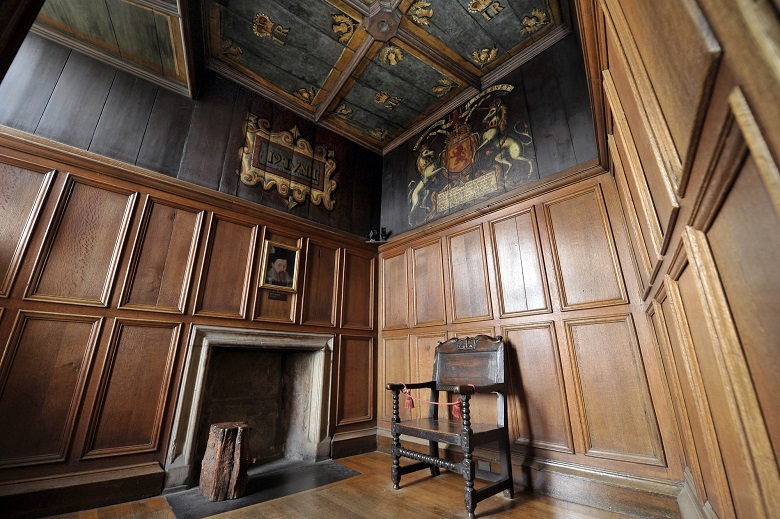
James VI birthing room. This is now thought to be more of a shrine than the actual location of the king’s birth. Credit: Donald MacLeod
Exactly fifty years to the day he was born, James returned to the place of his birth on 19 June 1617. The journey north had taken four months at a modern cost of roughly twenty-seven million pounds.
An impressive legacy
The renovation of the Royal apartments of Edinburgh is a lasting testament in stone to James’s remarkable success. He was not only one of the most successful Scottish monarchs, but also the first British monarch.
The castle, much like James himself, had overcome a harsh and turbulent history, often blighted by violence, and emerged as a (partially) lavishly gilded monument. Neither the monument nor the monarch could ever be described as completely beautiful or perfect. However, they did come to symbolise the majesty of monarchy.
James overcame conflict from his subjects and circumvented powerful church leaders. He held onto the throne in circumstances that may have deposed his Stewart forebears. For his interest in theology, he commissioned the King James Bible. This version of the bible is one of the most popular in Christianity and is still used in worship to this day. His unification and formation of Great Britain is a defining moment in history. Furthermore, James’s bloodline (through his daughter Elizabeth Stewart) continues through to the current royal family and is living, and lasting, monument to his astonishing legacy.
James’ lasting legacy on modern Britain, and the stone and mortar of the Royal apartments of Edinburgh Castle, ensure that James has not and will not be relegated to obscurity.
What next?
To mark the 400th anniversary of King James VI and I death this year, the National Galleries Scotland will host an exhibition, “The World of King James VI and I”, from Sat 26 April to Sun 14 September. Visit the captivating showcase of visual art forms from the 16th and 17th centuries, then visit the castle and see where his life began.
